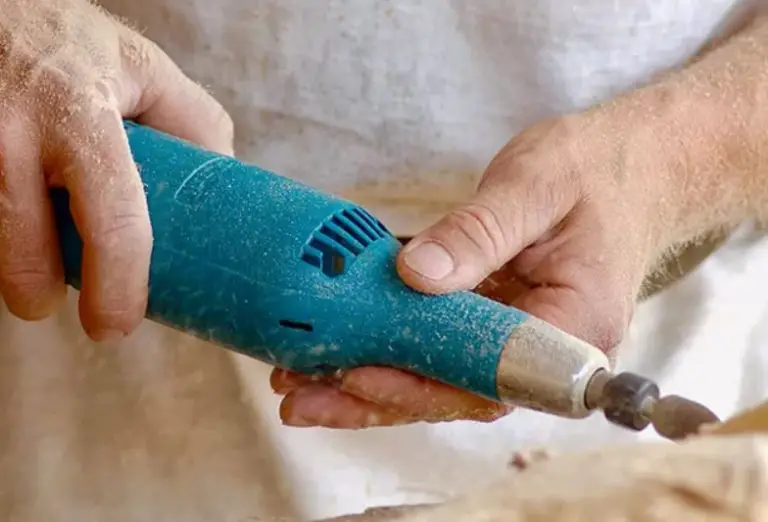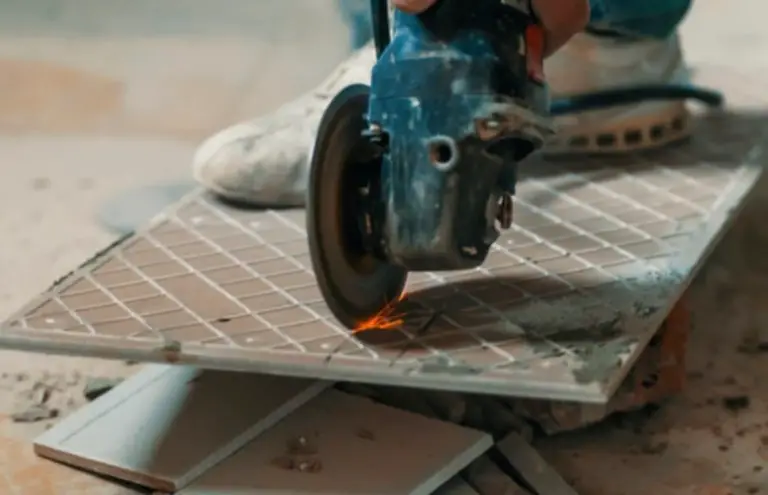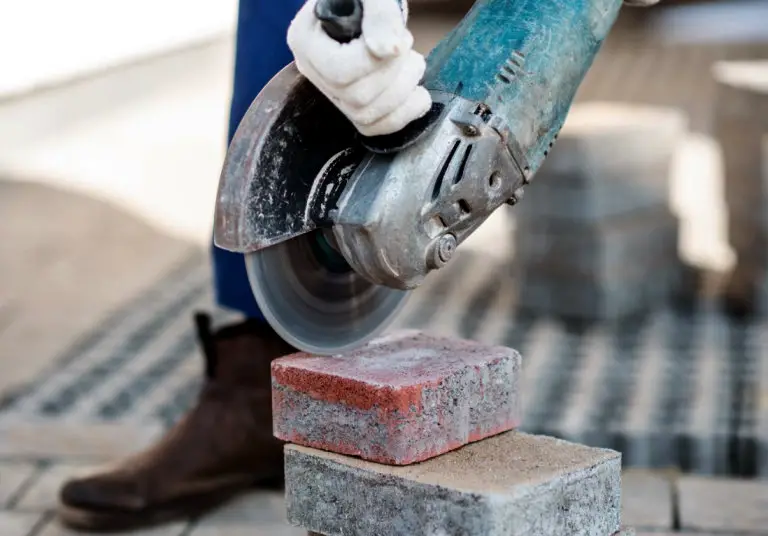Die grinders and angle grinders are the same types of power tools, however, each serves a distinct and important purpose in your toolbox. So, how are die grinders different from their angle counterparts?
Our article will focus on the comparison of a die grinder vs angle grinder to help you choose the most appropriate tool for a certain task.
Contents
- An Overview Of Die Grinder
- An Overview Of Angle Grinder
- Similarities Between Die Grinder And Angle Grinder
- Differences Between Die Grinder Vs Angle Grinder
- Die grinder & angle grinder comparison table
- Size: Angle grinders are heavier & bigger
- Power: Angle grinders have more power
- Power source: Most angle grinders are electric-powered
- Speed: Die grinders are faster
- Precision work: Die grinders are better-controlled
- Cut-off ability: Angle grinders can cut off better
- Disc size: Angle grinder wheels larger
- Working surfaces: Angle grinders work better on flat surfaces
- When To Use An Angle Grinder?
- When To Use A Die Grinder?
- Final Words
An Overview Of Die Grinder
Die grinders are tiny, handheld tools that can be used for a wide range of tasks. You may use them for polishing, cutting through different materials, smoothing rough edges on wooden and metal objects, grinding rust, sharpening discs, etc., which depends on the attachment you’re using.
There are a variety of available attachments that you can attach to your die grinder to carry out many types of tasks, which makes it a highly versatile power tool.

An Overview Of Angle Grinder
The functions of angle grinders are relatively similar to those of die grinders. Nevertheless, angle grinders are sufficiently distinctive to classify them as a different power tool. They are big, but still portable, disc-equipped handheld tools. The fast-spinning disk helps angle grinders perform cutting tasks.
With the correct blade, angle grinders can easily cut through or grind materials including metal and wood, and polish surfaces. Similar to die grinders, their angle counterparts are rather versatile and can be easily stored in any storage space.

Similarities Between Die Grinder And Angle Grinder
The grinding function is not the only similarity between die grinders and angle grinders. They are both useful power tools with overlapping usages that demand similar safety considerations.
1. Function
They are rotary tools, which means that they work by spinning their discs or other attachments.
2. Usages
The most popular usage of die grinders and angle grinders is grinding or removing abrasive material. Other applications include cutting, cleaning, polishing and sanding.
3. Versatility
Both power tools are versatile instruments that can be used for a variety of tasks. These versatile grinders may tackle a number of tasks in your workshops. This depends on your available collection of grinder attachments.
4. Safety
Since both kinds of grinders spin at high speeds, the debris from your workpiece can become a missile. Grinding blades have been known to shatter, resulting in life-altering face penetrating injuries. Therefore, a full-face mask will provide protection for your face.
Angle grinders have an adjustable guard, but their die counterparts don’t always have this critical safety feature. When using either tool, you should wear hearing protection, as well as protection for your face, eyes, and neck.

Differences Between Die Grinder Vs Angle Grinder
Clearly, there are some overlapping features and functions between the two grinder types. But what is the difference between a die grinder and an angle grinder?
Die grinder & angle grinder comparison table
| Die grinders | Angle grinders | |
| Size | 5 – 10 inches | 12 – 18 inches |
| Weight | 10 – 11 pounds | 12 – 20 pounds |
| Power | ¼ – ½ HP | 1.8 – 2.5 HP |
| Compressed air | Yes | No |
| RPM | 20,000 – 30,000 | 11,000 – 12,000 |
| Precision work | Yes (as better-controlled) | No |
| Cut-off ability | Suitable for small tasks | Cut off better |
| Disc size | 2 – 3 inches | 4.5 – 9 inches |
| Working surface | Great on various surfaces | Better if surfaces are flat |
Size: Angle grinders are heavier & bigger
Among the most fundamental distinctions between the two power tools are their size and weight. Angle grinders are often significantly larger and heavier in comparison to die grinders.
The latter ranges in size from 5 – 10 inches long and in weight between 10 and 11 pounds. Being much larger tools, angle grinders range between 12 and 18 inches long and between 12 and 20 pounds.
As a result, the user-friendliness of die grinders in this aspect is superior since they are smaller and lighter.
Power: Angle grinders have more power
Angle grinders and die grinders have quite different levels of power.
The expected power levels of a die grinder range between ¼ and ½ horsepower. By contrast, most angle grinders have 1.8 horsepower and a maximum of 2.5 horsepower.
As a result, die grinders are suitable for performing on smaller objects that are quite thin and require mild grinding or polishing. On the contrary, because of angle grinders’ higher power levels, you can use them to operate on significantly larger and thicker materials, including cutting metal. They provide a tremendous amount of cutting force that their die counterparts do not have.
Power source: Most angle grinders are electric-powered
The source of power is another obvious distinction.
Although there are some electric die grinders, the vast majority are pneumatic, which means they use compressed air as their power source. This can be beneficial since the mechanism allows the power tools to spin at high speeds. However, they need a continuous supply of compressed air.
On the other hand, angle grinders are exclusively electric. There are corded and cordless variants available. It is quite difficult to come by an angle grinder that is powered by compressed air like die grinders.

Speed: Die grinders are faster
Another significant distinction between the two types of grinders is the spinning speed of their discs. It’s worth noting that despite being larger and more powerful, angle grinders spin at a slower rate in comparison to die grinders.
Die grinders may spin at speeds ranging between 20,000 and 30,000 RPM, while angle grinders’ maximum speed is normally about 11,000-12,000 RPM.
Precision work: Die grinders are better-controlled
The speed differential allows die grinders to use smaller attachments specialized for precise cutting like carbide burrs, diamond head cutters, and point discs.
Because of die grinders’ compact size, rapid speed, and capability to operate with one hand and with small attachments, they are ideal for precise cutting projects.
Cut-off ability: Angle grinders can cut off better
It isn’t only simple to perform cutting tasks with angle grinders, but it’s also safe. Their safety guard keeps the fragmented parts of abrasive disks from flying around.
Small cutting tasks can be done with a die grinders’ cut-off disc. However, as evidenced by the lack of safety protections, they aren’t built for such operations. Therefore, you should choose a rotary power tool that has cut-off discs and a safety guard for cutting projects.

Disc size: Angle grinder wheels larger
The sizes of angle grinder wheels, varying from 4.5 inches to 9 inches, are larger than those of die grinder bits, ranging between 2 and 3 inches.
Therefore, the surface coverage of angle grinders is bigger than that of die grinders. Thus, the former is able to accomplish the work more quickly.
Working surfaces: Angle grinders work better on flat surfaces
Angle grinder wheels operate better on level surfaces because their cutting surface is flat. They also perform well on curved surfaces that cover a considerable area. Angle grinders with a buffing disc, for instance, can be used to polish an automobile’s body.
By contrast, die grinders are great for grinding and polishing sharp curves and holes as well as intricate interior profiles, etc.
Read more: Braking Grinder vs Angle Grinder – What should I choose?
When To Use An Angle Grinder?
The kind of tasks you carry out will have a big impact on which tool you should use. There are several variables that should be considered before you decide to select which type of grinders to use.
An angle grinder should be chosen if:
- Cutting and grinding are your primary tasks.
- You’re looking for a larger power tool for more demanding jobs, like cutting beams, steel poles, and thick metals.
When To Use A Die Grinder?
A die grinder should be your choice if:
- You need a lighter power tool.
- Your project necessitates precision cutting, such as porting in and around an automobile engine
- You’re comfortable with the majority of die grinders.
Final Words
Both types of grinders share some similarities but they also have a lot of distinctive features and capabilities. Therefore, the selection of a die grinder vs angle grinder depends on the type of project and personal choice. Nevertheless, whichever tool you choose for your tasks shouldn’t be used without safety gear.
